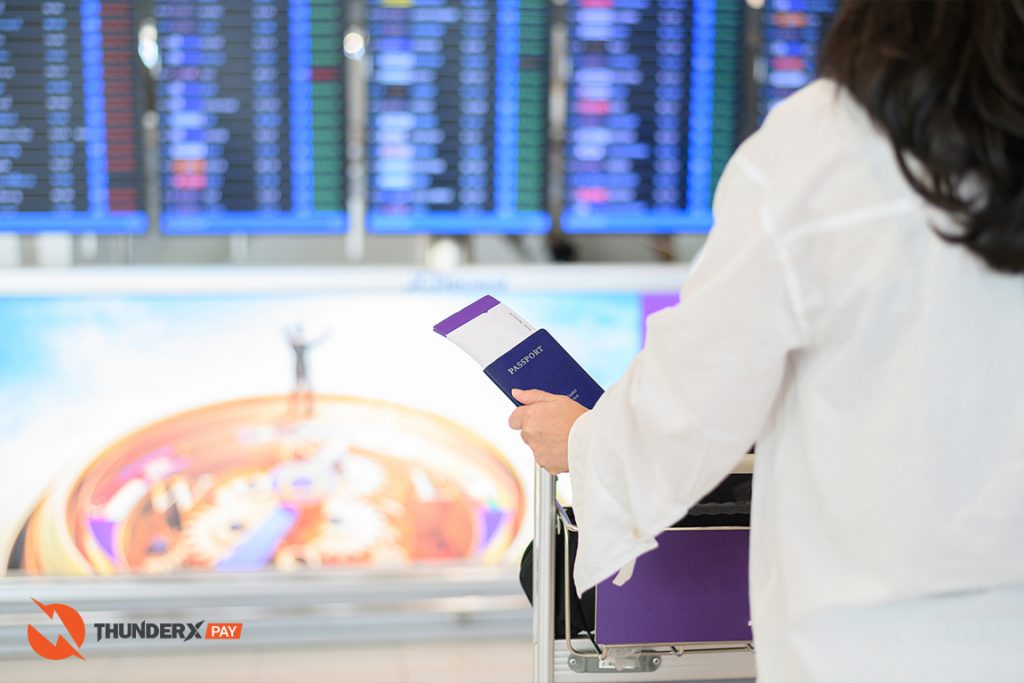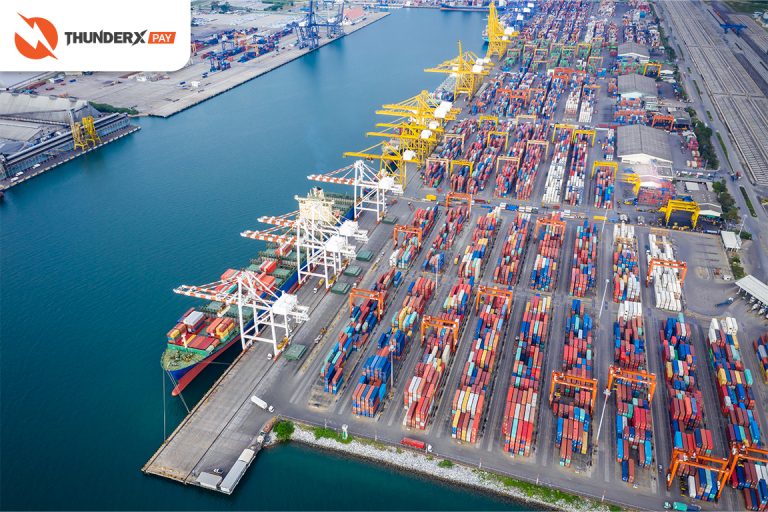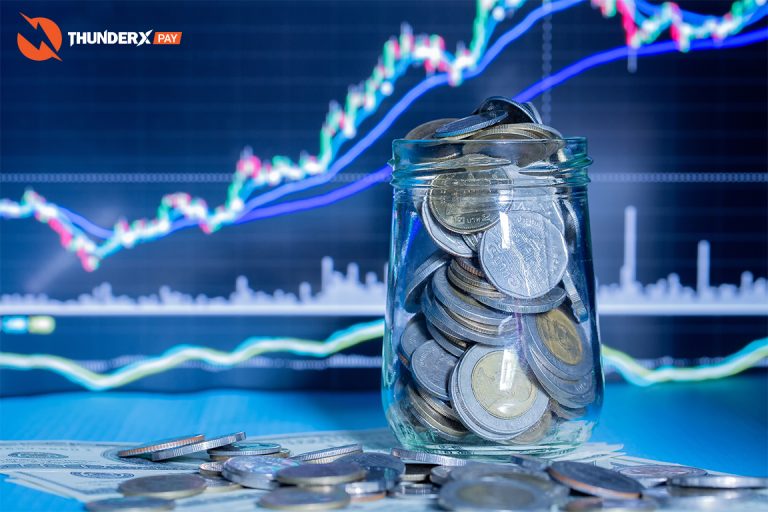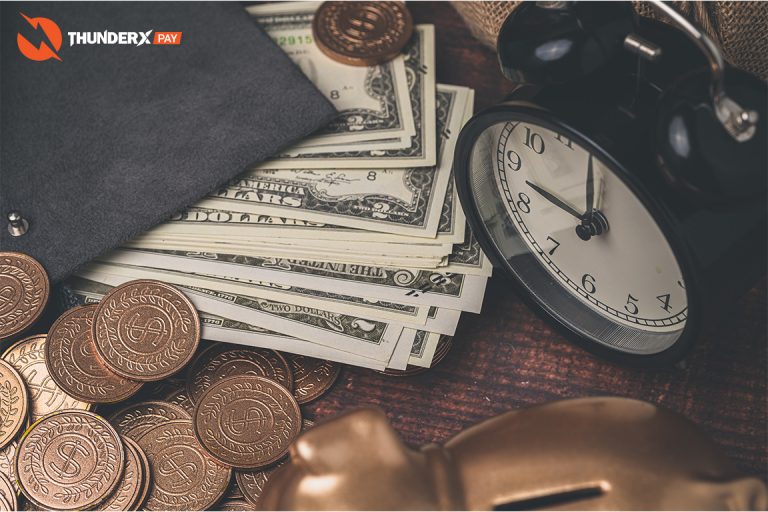The impact of the depreciation of the baht using the macroeconomic model If the baht depreciates by 5%, the real gross domestic product (RGDP) would expand by 0.40%, mentioned Mr. Thongchai Chavalitpichet, Director of NESDB. Fitch Ratings-Bangkok-22 June 2022 stated Thailand’s economic recovery is strengthening, although rising inflationary pressures and slower global growth pose risks to the near-term rebound, according to Fitch Ratings’ analysts at its 2022 Thailand Sovereign and Bank Outlook Webinar. However, the continuing Russia-Ukraine war is a key risk factor exacerbating uncertainties for the economy, money markets, the inflation rate, and energy prices worldwide. There seems Inflation has risen and is likely to increase further. Depreciation is a method used to allocate a portion of an asset’s cost to periods in which the tangible assets helped generate revenue.



Following the Ceicdata report, The Gross Domestic Product (GDP) in Thailand expanded 2.2 % Year-on-Year in Mar 2022, following a growth of 1.6 % in the previous quarter.
The central bank has indicated that the baht’s depreciation could impact manufacturing, commodity prices, and inflation. Since the beginning of the year, the baht has appreciated 4.5%, while other regional currencies have depreciated between 3 to 7%. A depreciation in the exchange rate can cause inflation which Inflation reflects an increase in the cost of living. This is because a depreciation
- Increases the price of imports
- Increases domestic demand (because exports are cheaper causing higher demand for exported goods)
- Exporters may have less incentive to cut costs because they can rely on depreciation to remain competitive.
From the depreciation statistic in May, The baht was valued at 34.62 per US dollar as of May 9, representing a depreciation of 3.4% since the beginning of the year, its lowest value in five years. The causes of depreciation are the conflict between Russia and Ukraine that continues the volatile price of oil to influence inflation and consumer confidence, the US Federal Reserve’s recent interest rate hike, the struggling Chinese economic recovery, and a lack of income from Thai tourism, while high logistics costs from protracted supply chain disruptions will also weigh on the baht, whereas, The impact of the Ukraine war and overall trend of the global economy are the big engines driving this depreciation.
From the depreciation statistic in May, The baht was valued at 34.62 per US dollar as of May 9, representing a depreciation of 3.4% since the beginning of the year, its lowest value in five years. The causes of depreciation are the conflict between Russia and Ukraine that continues the volatile price of oil to influence inflation and consumer confidence, the US Federal Reserve’s recent interest rate hike, the struggling Chinese economic recovery, and a lack of income from Thai tourism, while high logistics costs from protracted supply chain disruptions will also weigh on the baht, whereas, The impact of the Ukraine war and overall trend of the global economy are the big engines driving this depreciation.
Surging energy prices due to ongoing tensions in Russia-Ukraine have added pressure on the global economy’s recovery after the Covid-19 pandemic. PTT, as a national oil company, has played an important role to ensure supply for Thailand’s energy security, stabilize the volatility of energy prices and drive national economic growth.

The Economic Intelligence Center (EIC), a research unit of Siam Commercial Bank, predicts the baht will continue to weaken to 34.5-35.5 to the US dollar in the short term because of foreign capital outflows after the Fed increased its policy rate aggressively which the latest news, the current rate on 15th June is 1.75 increased 0.75% in May. The Bank Of Thailand (BOT) mentioned the Thai baht which touched its weakest exchange rate to the US dollar today (June 15) as global markets brace for the sharpest rise in US interest rates in almost 30 years with the Federal Reserve taking action to stop rising inflation in the US. The Thai central bank set today’s weighted-average interbank exchange rate at 35.12 baht to the US dollar which is the weakest in 5 years, whereas, The research center estimates the baht will strengthen to 33.5-34.5 to the US dollar at the end of this year. The stronger baht would be supported by a Thai economic recovery and the country’s current account would resume a surplus position, said the EIC.
This is driving capital flight out of Thailand which is quickly becoming the key reason for an increasingly volatile baht which is now the fourth most volatile in the region behind the South Korean won, the Philippines peso, and the Indonesian rupiah. Moreover, Sanan Angubolkul, chairman of the Thai Chamber of Commerce, said Thailand’s hefty household debt was worrying, and it may affect the pace of the country’s long-term economic recovery.
Advantages of Thai baht depreciation
However, Thailand’s tourism sector is expected to see a strong rebound in the second half of this year and support the country’s current account and the baht said the EIC. Inflows of foreign currency revenue from tourists would help stabilize the baht and even reverse its course.
Fewer tourists also mean lower demand for the Thai baht.
The promise of a cheaper trip might persuade tourists to travel, which can help accelerate the recovery from the tourism slump over the past two years in which tourists can spend less on the same products and services while traveling in Thailand, said Mr. Sisdivachr, president of the Association of Thai Travel Agents.
Vichit Prakobgosol, vice-president of the Tourism Council of Thailand, added the depreciation of the baht would help accelerate travel decisions and generate more jobs and revenue for operators who serve the inbound market yet the businesses would face a greater impact from higher oil prices which worsen energy to import costs. Even if Thailand can achieve 10 million foreign tourists this year, this would still only be 25% of the level achieved in 2019.
“The rapid depreciation of the baht in June corresponded with a wider divergence between Thai and US interest rates despite better foreign tourism numbers.”

Disadvantages of Thai baht depreciation
The rising dollar is making life difficult for many global corporations. On top of supply chain disruptions and inflation, they need to worry about the effect of the rising dollar on their profits.
The weaker baht is expected to boost the Thai economy and increase real GDP by 0.4%, but not all manufacturers will reap the benefits, says the Industry Ministry, and also the government must carefully manage the demand and supply of the baht to keep its value at a rate that will benefit both importers and exporters, said the Federation of Thai Industries (FTI). Kriengkrai Thiennukul, chairman of the FTI, did not provide an appropriate value but warned that the recent depreciation against the US dollar threatens to further fluctuate the economy If the Thai government cannot deal with foreign exchange rate fluctuations, many Thai manufacturers will face new economic problems, worsening their financial position.

Industries with low amounts of both imports and exports will not be affected by changes in foreign exchange rates as they use domestic raw materials and mostly sell products in Thailand. These industries include office equipment, textiles and garments, and non-alcoholic drinks.
Affecting industry sectors:
The depreciation has made Thai exports cheaper, but imported raw materials have become more expensive. Industries such as steel, medicine, and oil, which depend greatly on the import of raw materials and have few exports, will bear the brunt of the baht depreciation, said the Industry Ministry. Manufacturers with high imports of raw materials and low exports of products need to run their businesses cautiously as the value of the baht falls. It is more affected by the higher cost of imports of raw materials than the benefit from the increased export revenue, such as steel plates, steel bars, medicines, crude oil, and animal oils.
Borrowers will face higher costs if the Monetary Policy Committee raises the policy rate next month by 25 basis points, as commercial banks will follow suit and hike their lending rate. According to the BOT, Thailand has short-term foreign debt of $27 billion, due in less than a year, but the country’s international reserves are three times over the short-term debt. This strong position would prevent massive capital outflows or an economic crisis.



Moreover, In this regard, from the NESDB study of production inputs and outputs, industries affected by the baht depreciation can be divided into 4 groups.
- The Industry uses mainly domestic raw materials for production and has a lot of exports. As a result, the benefits from higher revenues are greater than the disadvantages of higher import costs such as canned fish, canned fruits, plastic resins, and home appliances, among others.
- The industry with a large proportion of raw material imports and a large proportion of exports is the group that benefited from higher income from the depreciation of the baht. But it was also affected by the rising cost of importing raw materials, such as circuit boards, chemicals, medical devices, etc.
- An industrial group with a small proportion of raw material imports and a small export proportion. It is a group that produces mostly for domestic sales or does not rely on the export market mainly. coupled with the use of mostly domestic raw materials Therefore, it was not greatly affected, such as motor vehicles, motorcycles, tobacco, and office equipment. (air conditioner, refrigerator, washing machine, and computers), etc.
- An industrial group with a large percentage of imports and a small percentage of exports. It is the main importer group with a proportion of importing raw materials and intermediate products for use in mass production.
“Inflation is a bigger threat to business and the less well off than higher interest rates,”
said the bank chief
As a result, the benefits from higher revenues are greater than the disadvantages of higher import costs such as canned fish, canned fruits, plastic resins, and home appliances, among others.
On the other hand, Anusorn Tamajai from the executive committee of Thammasat University’s Pridi Banomyong International College argued that the weakening baht would boost the incomes of exporters, especially those who sold their products in April and May when the baht was 33 to the dollar. Now, with the baht depreciating to 36-37 baht per dollar, exporters get a 9-12 percent revenue boost when they exchange dollars for the baht, he said.

To steady the fluctuating baht, the central bank is believed to have intervened in the exchange rate market by buying baht and selling dollars from its reserves. The intervention has led to a $3-billion drop in its international reserves as of July 8 compared to the previous week.
The EIC predicts the Fed will continue to increase its benchmark policy rate aggressively throughout the remainder of this year. The Fed is expected to increase its policy rate by 75 basis points at its July meeting and 50 basis points in September, said the research house. In November and December, the Fed Funds Rate is expected to increase another quarter-point per meeting, pushing the rate to a range of 3.25-3.5% at the end of this year, the EIC said in a report.
Analysis of THB depreciation
Therefore, as the ThunderXpay analyst team mentioned, the depreciation of the Thai currency has been more disadvantageous than advantageous due to external uncertainties plus rising domestic inflation, manufacturing costs, and consumer goods prices, as well as the possible interest rate rise. Thailand’s economy grew faster than expected in the first quarter supported by a pickup in agriculture and an easing of Covid-19 restrictions, but higher inflation remained a fragile recovery. Currency appreciation and depreciation are pivotal forces in the global travel and tourism industry.



The baht depreciated to 34.46 against the US dollar on June 7, down from 33.38 baht on December 30 last year. The manufacturers with high imports of raw materials and low exports of products need to adopt appropriate risk management to cope with currency fluctuations by making forward exchange contracts and foreign exchange options. The rising dollar has had significant effects on the global economy. For one thing, it has contributed to the surging U.S. trade deficit, which hit a new high in March. A more valuable currency makes imports cheaper and exports more expensive and less competitive on world markets.
The currency depreciation is manageable but if there is too much capital outflow and currency depreciation in a short period, it can touch off a balance of payments crisis as countries struggle to make debt payments and cover the cost of their imports. If a country has a higher inflation rate than its competitors, then its goods will be increasing in price at a faster rate and therefore, it will become relatively less competitive. It will experience less demand for its exports and therefore less demand for its currency. This will tend to cause a depreciation (fall in value) of the currency.
Published 15/08/2022
By Ashley Jones

